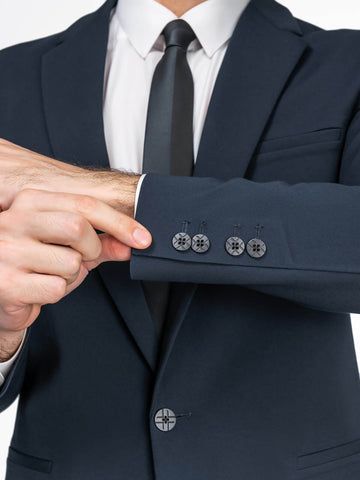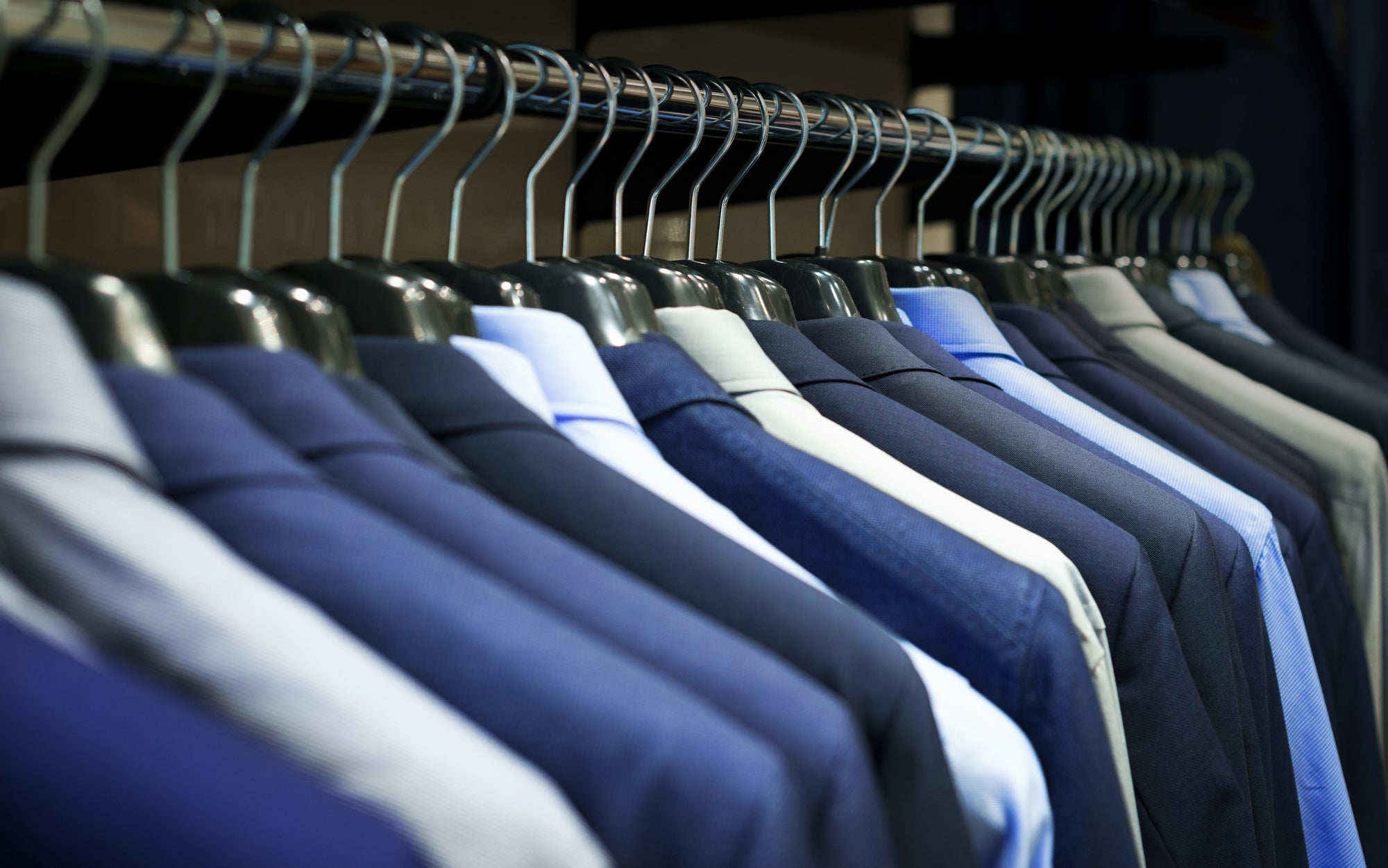Fabrics may be one of the things that is most known, but least understood. Afterall, you wear fabric on your body literally every day of your life - yet have you given it more than a casual thought?
In fact, fabrics have a number of variations and processes to make them the most comfortable and durable for you to wear, as well as utilizing other features. Today we’ll explore what goes into high quality suit fabrics, with a special focus on knits.

Woven vs. Knit Fabrics
In the world of fabrics, the two main types of knit and woven. Knit fabrics use interlocking loops made out of a long yarn to form a smooth, slightly stretchy kind of material. Factories that make these use giant knitting machines, using a similar process to hand-held knitting needles. Meanwhile, woven fabric features two sets of threads that cross over and under each other to form a pattern. They use large looms set with vertical and horizontal threads.
The feel of these two types of fabric builds is very different. While knit fabrics have been around since the 5th century, the process has been improved greatly in recent years, given a variety of advantages over its woven counterparts.
Most suits have traditionally been (and still are) woven. This is because making a knit suit that retains its structure requires a great deal of technology and use of different types of knits that can create the perfect balance of comfort and style. The xSuit is one of the first of its type to do this.
Here are some of the main advantages of using knit:
Stretch: Much more stretchy because of the open, interlocked thread structure.
Breathability: More breathable due to open looped thread structure.
Softness: Much softer and more flexible
Comfort: Very comfortable, soft, and form-fitting

Types of Knit Fabrics
When it comes to knits, there are three main types going from simplest to more complex. Depending on the type of fabric, each type has its uses.
Jersey Knit
The simplest of knit fabrics, made of interlocking loops going horizontally in large tubes. Its soft but yielding stretch is perfect for garments that conform to the body, for a flattering look every time. You can find this knit used in t-shirts, including the xTee 3.0.
In general, jersey knit fabric technology is the cheapest to do, also making it the most common among clothing items that are lower cost. However, techniques can also be utilized to add higher quality to the jersey knit process, utilizing different fibers and styling.

Pique Knit
A more complex and tighter knit structure next to skin and a more open texture on the exterior that wicks moisture. Despite its comparative thickness, Pique Knits offer easy stretch, and an open construction leads to more airflow. Some of xSuit’s products utilize this knit process, including the xTee 2.0 and xShirt 3.0.
Because of its more complex process, pique knit technology is more expensive to do, and will cause products to cost more by utilizing it.

Ponte Wrap Knit
A rich, dense fabric made of two layers of interlocking jersey, Ponte Knits are known for their structured look and resilient stretch, creating a unique Workleisure fabric that’s an ideal alternative to sweats, able to wear anywhere with maximum comfort. The xSuit 2.1 and 3.0 performance suits both incorporate this technology.
Of the three mentioned knit processes, ponte wrap knit is the most complex and expensive, needing to be done through specific machinery and sourcing processes. Therefore, most cheaper fast fashion outlets will not utilize this technology.

Fibers into Suit Fabrics
In order to have top level stretch and flexibility, top level materials and technologies need to come together, requiring a great deal of time and testing. At xSuit, our proprietary Infinite stretch fabric is the third iteration of our premium stretch fabric. We’ve made the fabric stretchier, lighter and more breathable than ever before. You won’t believe the soft and airy feel on your skin. This is achieved through the yarn fibers we use for making our fabrics. We select the best yarns that offer specific properties, and of course, comfort above all.

So what is the secret formula of an xSuit? While we can’t share all of the details, it combines the following three materials that each have important properties and uses:
Modal
These fibers are designed to be stronger and more resistant to shrinkage. This makes modal easier to care for, and helps clothing like the xSuit to be machine washable without shrinking or being otherwise negatively affective.
Spandex
Spandex, Lycra, or elastane is a synthetic fiber known for its exceptional elasticity and a core yarn used in all our fabrics for that extra movement needed for an active and versatile lifestyle. One issue of spandex is that it makes it more difficult to maintain structure, and usually using 4% of it is the limit. However, xSuit is able to use 9% of it because of its more intricate construction.
Rayon
One of the great properties of rayon is its temperature regulating. This and its breathability make it a perfect fabric for both warm and cool weather.
So there you have it - a good overview of the fabrics that go into your suit (and other clothes). Hopefully from this, you’ll think of your clothes in a new way the next time you put something on.
******************
Now that you know all about the fabrics that go into your suit, would you like to learn some more about the construction of it? Check out our article here to understand the difference between constructed and unconstructed suits.


